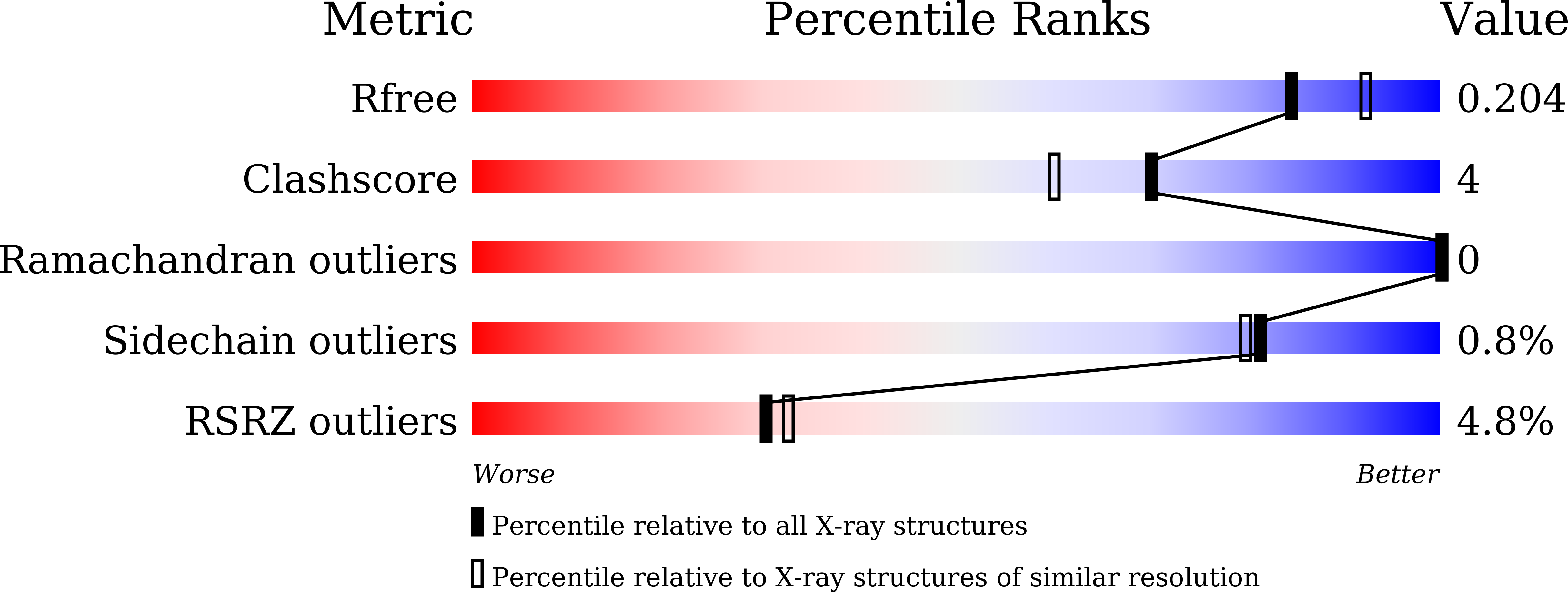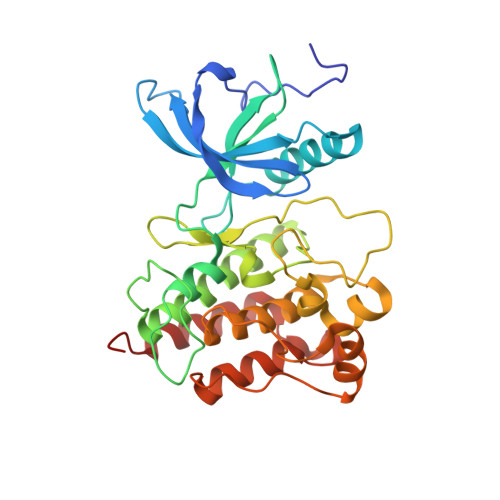Structural basis and selectivity of sulfatinib binding to FGFR and CSF-1R.
Lin, Q., Dai, S., Qu, L., Lin, H., Guo, M., Wei, H., Chen, Y., Chen, X.(2024) Commun Chem 7: 3-3
- PubMed: 38172256
- DOI: https://doi.org/10.1038/s42004-023-01084-0
- Primary Citation of Related Structures:
8JMZ, 8JOT - PubMed Abstract:
Acquired drug resistance poses a challenge for single-target FGFR inhibitors, leading to the development of dual- or multi-target FGFR inhibitors. Sulfatinib is a multi-target kinase inhibitor for treating neuroendocrine tumors, selectively targeting FGFR1/CSF-1R. To elucidate the molecular mechanisms behind its binding and kinase selectivity, we determined the crystal structures of sulfatinib with FGFR1/CSF-1R. The results reveal common structural features and distinct conformational adaptability of sulfatinib in response to FGFR1/CSF-1R binding. Further biochemical and structural analyses disclose sensitivity of sulfatinib to FGFR/CSF-1R gatekeeper mutations. The insensitivity of sulfatinib to FGFR gatekeeper mutations highlights the indispensable interactions with the hydrophobic pocket for FGFR selectivity, whereas the rotatory flexibility may enable sulfatinib to overcome CSF-1R T663I . This study not only sheds light on the structural basis governing sulfatinib's FGFR/CSF-1R inhibition, but also provides valuable insights into the rational design of dual- or multi-target FGFR inhibitors with selectivity for CSF-1R and sensitivity to gatekeeper mutations.
Organizational Affiliation:
Department of Oncology, NHC Key Laboratory of Cancer Proteomics, State Local Joint Engineering Laboratory for Anticancer Drugs, Xiangya Hospital, Central South University, Changsha, Hunan, 410008, China.

















